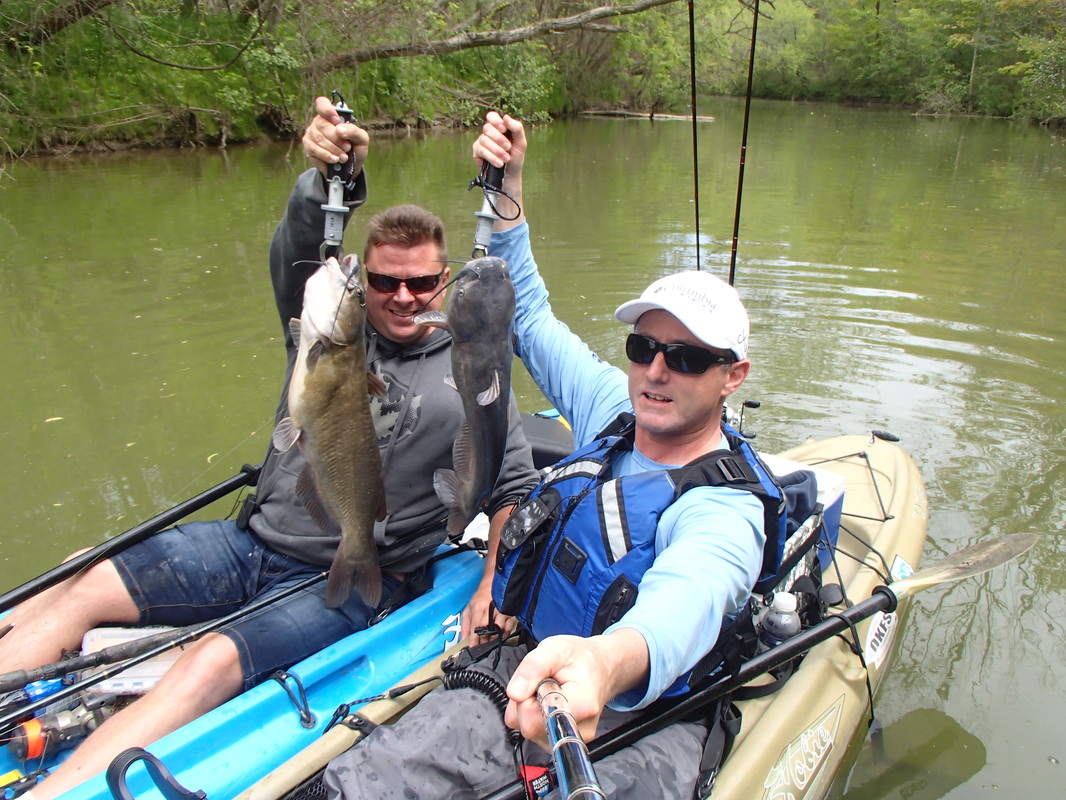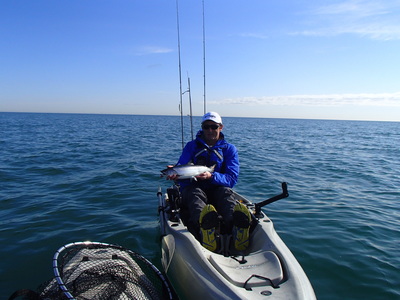|
by Steve Galea | February 21, 2017
Recurring issues of illegal or poor angling behaviour that include littering, alcohol in public places, and wastage of fish have caused the Municipality of Port Hope to consider implementing night fishing restrictions and a $40 Municipal Access Fishing Pass. The proposals apply to stretches of the Ganaraska River owned by the Municipality or the Ganaraska Region Conservation Authority. These proposed resolutions will be presented to the Municipality of Port Hope Council on Feb. 21. The report recommends petitioning the Ministry of Natural Resources and Forestry (MNRF) to revise the Ontario Fishing Regulations to “prohibit night fishing on the Ganaraska River from August 15 to September 30, from 8 p.m. to 6 a.m., from the Robertson Street Bridge to the Jocelyn Street Bridge; And further, that By-law 45/2012, being a By-law to regulate, protect and govern the use of Parks, Recreation Areas and Park Facilities be amended to prohibit night fishing on the Ganaraska River from August 15 to September 30, from 8 p.m. to 6 a.m., on all Municipal properties from the Robertson Street Bridge to the Jocelyn Street Bridge…” Another proposed resolution calls for the creation of a Municipal Access Fishing Pass, for anglers between 18 and 65. It would permit fishing in municipal and Ganaraska Region Conservation Authority properties. The report containing the recommendations cites poor angler behaviour that includes “snagging, gaffing, and netting of fish, fishing in a sanctuary, harvesting roe, leaving remains to spoil, fishing without a valid license, and keeping more than the daily limits.” It also asserts that much of this behaviour occurs during the night. The report notes that the MNRF are not supportive of the Access Fishing Pass as it might restrict access to public fishing and set a precedent for other jurisdictions to follow suit. Ontario Federation of Anglers and Hunters Fisheries Biologist Tom Brooke said, “We’re aware that there are issues with fishing at Port Hope and that something needs to be done, but we are hoping that the Municipality would consider options that don’t restrict access to the fishery.” Brooke says public parking fees in the area or the licensing of food vendors who would serve anglers are two possible solutions. These would help the municipality recoup costs (which are reported to be almost $20,000) incurred from running and maintaining their fish cleaning station and porta-potties along the river. Jim McCormack, Director of Parks, Recreation and Culture for the Municipality of Port Hope said, “We had to do something. We as a Municipality are incurring costs in order to deal with fishing issues. The numbers of anglers are overwhelming, especially on weekends in the fall, and with that comes an overwhelming number of issues.” McCormack says the Municipality has trained members of the Port Hope Police Services to enforce fisheries regulations and have also introduced a zero-tolerance policy for violations. He says this has helped, but it is costly. “All the tickets we write for fishing violations go to the province and we are not recovering costs, so these proposals address that and the other issues.” He says that should the proposals be approved by council, by-laws and processes will still have to be developed. “We want to make this a smooth transition.” Because of this, should the proposals be approved, McCormack believes the changes will not be in place until autumn 2017. The Ganaraska River is the most-fished tributary on the north shore of Lake Ontario. The Municipality is seeking public comment on the issue until February 26. To learn about the issue and comment visit http://www.porthope.ca/community-consultation/salmon-fishing-report. Although we won't be at the show this year promoting Nomad or OKFS, this is still the best fishing show in Canada to attend. Get out and support our local businesses and guides!  Maybe see you wondering around the show.
A cool Fall day in Dec '16. Fishing was a bit slow for the first half of the day but was able to round it out with three steelhead each from different year classes, which was great to see and very important for the fishery! Time for a new camera angle though, so stay tuned for the next videos.  CBC January 10, 2016 Deadly salmon virus may be in B.C. waters, study suggestsEvidence of a deadly virus that has caused severe damage to the Atlantic salmon farming industry has been discovered in some farmed and wild B.C. salmon, according to a new study. Biologist Alexandra Morton of the Raincoast Research Society worked with statistician Richard Routledge of Simon Fraser University and other researchers to test for the virus in more than 1,000 farmed and wild salmon of varying species. The study published Jan. 6 in the peer-reviewed Virology Journal, found genetic matches for the European variant of the infectious salmon anaemia (ISA) virus in 79 cases. 'Pieces' of disease found "We never found the whole virus, we just found pieces of it, but the pieces of the virus can't exist by themselves, so it's concerning, because this is a member of the influenza family," Morton told On the Coast host Stephen Quinn. The farmed fish used in the study were collected from markets, which Morton said is a limitation. "We couldn't actually go to the fish farms and get the weaker, more diseased fish for testing," she said. Morton said the virus was dominant in Chile's farmed Atlantic salmon stocks for years, until a mutation appeared in 2007 and "ripped through the industry and caused over $2 billion in damages." Morton said wild salmon on B.C.'s coast are passing through areas where salmon are heavily farmed, and she worries what the virus may do to the wild fish. "I'm hoping this work could be an early warning .. and we can get a handle on this before it mutates and does something," she said. Salmon farmers dispute study ISA was previously suspected to be in the province in 2011, but at that time the Canadian Food Inspection Agency did not find any cases. Jeremy Dunn, the executive director of the BC Salmon Farmers Association, criticized the methods used in the study published in Virology Journal, calling the results "false positives." "The CFIA has been very definitive saying that ISA does not exist in British Columbia, and I can confirm that farm-raised salmon in British Columbia have never and are not showing any signs of sickness from this virus," he said. To hear the full story listen to the audio labelled: Evidence of a deadly salmon virus found in B.C. waters, study suggests These are the folks who contribute the most to make steelheading in Ontario as great as it is! After a warm and very dry October, the fall started to turn around quickly with some heavy rainfalls and prolonged days of rain in early November. Steelhead were slow to arrive as temperatures were 5-10C above normal for several weeks. Niagara River has been reliable but but most rivers have just started to see their normal number of arrivals, even with three weeks of high water. Winds have been insane with 3-4 days of 40-80km/h each week. Things should normalize with November weather just arriving as I type. Looking forward seeing smaller crowds on the river as the temps drop, as there has been a lot of river traffic this fall! Fishing has been excellent these past three weeks, and we have limited openings left. Be sure to book soon if you are hoping for a fall trip!
Yesterday I had the pleasure of fishing with Robbie D of Big City Fishing, chasing down spring catfish on a smaller Lake Erie tributary. The fish were not in thick just yet but we had our share of battles with old whisker face. Some regions like the lower Grand River see early runs of catfish right after ice-out, but many of the lesser known and lesser fished waters get significant runs that are just starting heat up. Any creek or river with clay/mud bottoms and a good amount of near shore timber will host decent numbers of these fish. Catfish fishing in Southern Ontario is an excellent filler between spring trout fishing and early summer bass opener. They are not the most glamorous fish available in the Great Lakes region but they sure will give you all the fight you can handle, and then some! These are not the little brown bullhead or mudcats that you incidentally catch when live bait fishing. These are big angry and very explosive fish when first hooked, and they don't let off until you put the clamps on them. The average fish is between 7-10lbs but often exceed 15-20lbs. Heavy gear is the order of the day when angling for these beasts. A 9' M/H rod, a 300/3000 series reel or better, spooled with 30lb braid is an adequate set up to tame these big kitties. We use an assortment of cut-bait, dead minnows, shrimp style baits, and anything else with a heavy oily fish smell. Pautzke Nectar is an excellent bait rejuvantor for baits that have been soaking for too long, or to give that added kick. Size 3/0-5/0 hooks work well for hooking these large meaty servings, and we suspend them under a float. Split shot may or may not be necessary depending on the depths fished. Canoes and kayaks are an excellent stealth approach for getting right on top of these fish where you need to be. Allowing you run your presentation under float with no unnatural movement as you drift down the creek or river. Watch for the videos and more pics of this adventure coming on Big City Fishing. So if you are already bored with pike, and panfish aren't your thing, grab your paddling gear and head out for some spring cats to fill the void, or look up Nomad Adventures for your catfish fix! And be sure to bring extra hooks because the submerged timber rarely gives back!
Had a great time out with Rob Dankowsky of Big City Fishing this past week. We absolutely hammered the fish in a short span of just 3 hours of kayak fishing! Three huge Chinook Salmon came to the boat in the first forty minutes, followed by a smaller one. Lake Ontario grand slams were easy to come by on this trip, when just after that initial burst we had a plethora of Brown Trout, Coho Salmon and Lake Trout. Our timing was perfect having connected with 13 fish in total. Unfortunately the warm weather has arrived and now driven the fish out to deeper water in search of baitfish. Watch for this episode to air on Big City Fishing later in 2015 or early 2016.
We now shift our efforts to cooler waters of Lake Huron and the Niagara River in search of more salmon and trout. Be sure to book your next fishing adventure with Nomad Adventures! Air Temp: +3C @ 7am start, +8C @ 10am finish Wind: 20km/h NW dropping to 10km/h NW Water Temp: 40.6F @ 7am, 42F @ 10am Fish: 3 Chinook, 3 Coho, 1 Laker, plus many more caught by friends in just a 3 hour span. RECAP:
The Salmon bite was ON for Lake Ontario but only lasted a week with the warm temps that arrived over this past week. Book your Great Lakes salmon trip this fall or next spring with Nomad Adventures before they are gone! |
FISHING NEWS ONTARIOOntario and Great Lakes region salmon, steelhead, and migratory trout fishing articles, information, news, and reports. Stay up to date on our most recent trips, events, tournaments, and general news on adventure fishing and kayak fishing in Ontario and Canada. Archives
April 2021
Categories
All
Links |


















 RSS Feed
RSS Feed